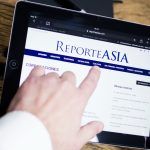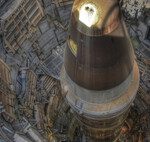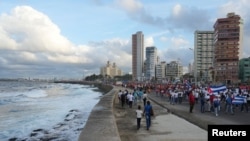The meeting begins this Tuesday, May 30. Most of your sessions will take place behind closed doors. It is expected that most of the heads of State and Government of the region will attend, including the president of Venezuela, Nicolás Maduro. For her part, Dina Boluarte will not be at the meeting, as she is being investigated for alleged genocide.
A new attempt to promote regional integration. This Tuesday, May 30, Brasilia, the executive capital of Brazil, will host a regional summit that generates expectations. In the sights: the return and restructuring of the Union of South American Nations (Unasur).
It is a body created in 2008 by the then regional leaders (most of them with leftist tendencies) with the purpose of agreeing on the cultural, political, social and economic strategies of their nations and counteracting Washington’s influence in the region.
The participation of about 11 heads of state and/or government is expected. Among the list are, among others, Gustavo Petro, president of Colombia; Luis Arce, from Bolivia; Gabriel Boric, from Chile; Guillermo Lasso, from Ecuador, and Luis Lacalle, from Uruguay.
It is worth noting, as extraordinary cases, the presence of Nicolás Maduro, in what supposes his return to the integrationist arena after years of absence. POn behalf of Peru, Prime Minister Alberto Otálora will be in charge of carrying the voice of his Government. Dina Boluarte will not be able to attend as she is involved in a legal process: she is accused, among other charges, of alleged genocide for the more than 60 deaths left by the anti-government protests that broke out in her country after the arrest of former President Pedro Castillo.
It will be the first summit with the Unasur format since 2014. In this period of distancing, a wave of right-wing governments took over the majority of the presidencies in the region, extinguishing the momentum that was a predominant common factor: progressivism.
This week I receive in Brasília the presidents of South America, to discuss together the future of our region. Nenhum country grows sozinho. We have to work with our vizinhos in the construction of partnerships for the economic development of the region, strengthening ties…
– Lula (@LulaOficial) May 29, 2023
“No country grows alone”, sentenced ‘Lula’ on Twitter. “We have to work with our neighbors in building partnerships for economic development, strengthening cultural ties, and defending democracy,” she concluded.
“May this second try” prevail
Another chance. Nine years after the last high-level meeting, this first meeting is expected to consolidate the bases to relaunch regional integration despite the differences.
“The idea is to resume dialogue and cooperation with South American countries. Identify common denominators to see how a path can be started to return to having a purely South American cooperation mechanism”, said the secretary for the Ministry of Foreign Affairs of Brazil, Gisela Figueredo, quoted by the news agency ‘Télam’.
The region did not have a unitary structure that would centralize the concerns of dissimilar governments on key issues for regional stability such as the democratic question. An example of this was the fact that Venezuela became the trigger for the almost total rupture of Unasur. The differences in how to identify the mandate of Nicolás Maduro and how to resolve the internal crisis generated by the figure of an opposition leader self-proclaimed president in that country account for the absence of consensus mechanisms within the region.
Thus, the meeting in Brasilia seeks to address these issues. However, the meeting raises a key question: How to consolidate the organization before a possible new turn to the right?
According to professor of international relations Oliver Stuenkel, from the Getulio Vargas University and Study Center in São Paulo, “the biggest problem with Unasur is that it was built at a time when there were left-wing leaders and it collapsed when right-wing leaders arrived.” in dialogue with the AP news agency, the professor identified this stability in the face of ideological changes as the fundamental challenge of the meeting.
“It’s easy to talk about their comeback now, but they need to think of ways to make this second try last.””, he stressed.
However, other challenges are on the table. The political crisis in Ecuador, the instability caused by the passage of six presidents for five years in Peru, the rise of the Chilean right that will lead the drafting of a new Magna Carta, and the upcoming elections in Argentina. All of these raise the need to create a lasting mediating entity.
Nicolás Maduro, back on the international scene
Neither the “diplomatic siege” nor the “recognition” of Juan Guaidó as the “president in charge of Venezuela” led Maduro to ostracism. Today Guaidó is a memory that the same Venezuelan opposition took off the board.
In this sense, dialogue with whoever holds power is a possible solution for the leaders of the regional new left. One that will also have the challenge of not failing to recognize the problems that Venezuela faces.

Maduro arrived in Brasilia on Monday to inaugurate the relaunch of diplomatic relations, broken by the far-right ex-president of Brazil, Jair Bolsonaro.
“Venezuela is a neighbor and diplomatic ties cannot be ignored or broken, as we have practical problems that need to be resolved”, highlighted Carolina Silva, also an expert in international relations at the Federal University of São Paulo.
‘Lula’ as a regional political stage designer
For some you have to go further. ANDhe foreign minister of Brazil, Mauro Vieira, stated that despite having a similar format, the meeting does not represent a Unasur summit.
Even sources from the Brazilian Foreign Ministry, quoted by the EFE agency, point out that this is an “obsolete” mechanism that must be “reconsidered.”
Perhaps it is a nod to the leaders of the conservative right who attend the event, such as Lacalle and Lasso, to bet on their cooperation.
South America needs to work as a bloco. It is not possible for a country sozinho to solve its problems, which last hundreds of years. We have been dealing with poverty for 500 years. If we are together, we are 450 million people. As a block, we can negotiate with much more…
– Lula (@LulaOficial) May 29, 2023
Vieira himself marked the way forward for the meeting. He assured that he will seek to identify “coincidences” and not mark the “differences”, also exposed the objective of finding “concrete initiatives”. All this, with the purpose of generating a meeting “free of ideological charges”.
For ‘Lula’ he poses a personal purpose. The president, known for his ability to build consensus, has failed to advance his goal of mediating in the Ukrainian conflict. In this sense, the summit could mean that its image as an international interlocutor emerges strengthened.
A look to the past
The search for a Latin American regional integration dates back many years. ANDn 1969, one of the first consolidated integration strategies came to light with the creation of the Andean Pact. The first step was taken by Colombia, Bolivia, Ecuador, Peru and Chile. An initiative abandoned by the latter country in 1976 and later joined by Venezuela.
More than two decades later, one of the strongest economic blocs on the American continent emerged: Mercosur. Composed of Argentina, Paraguay, Uruguay and Brazil, its secrecy did not prevent this group from calling a regional summit in 2000.
The South American Regional Infrastructure Initiative emerged from that meeting, a plan that took a few steps and was the preamble to the creation of Unasur.
The Brasilia meeting will try to condense all these plans at a time when the war in Ukraine has strengthened the creation of economic and political blocs in the face of the danger of the rupture of international production chains caused by the conflict.
With EFE, AP and local media














